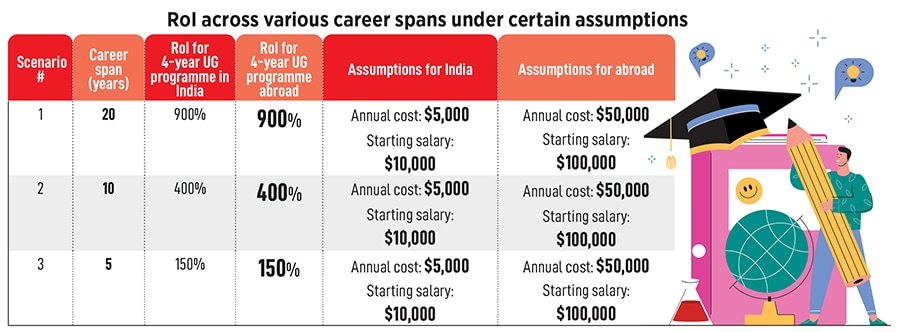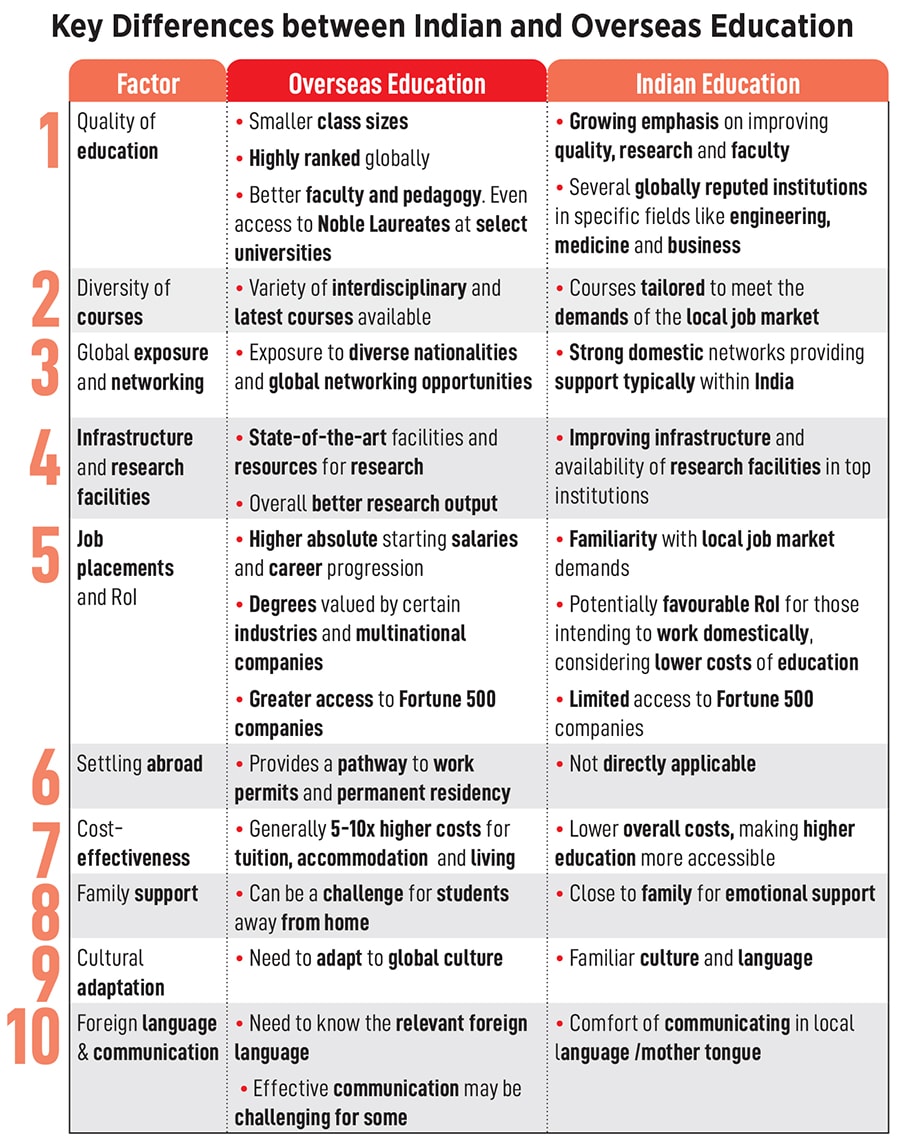
Home or overseas education: Which is better?
Founder and CEO of RAYSolute Consultants decodes the return on investment from studying abroad
 International education is no longer a privilege reserved for the super-rich and residents of metros
Image: Vlad Zymovin / Shutterstock
International education is no longer a privilege reserved for the super-rich and residents of metros
Image: Vlad Zymovin / Shutterstock

The debate of home versus overseas education is common in a student’s journey from higher education to the corporate world. The question mostly arises after a student has completed class 12th or graduation.
India has the largest higher education system in the world, in terms of the number of institutions. According to the All India Survey on Higher Education (AISHE) 2021-22, India had 1,168 universities, 45,473 colleges, 12,002 standalone institutions, 15.98 lakh (~1.6 million) faculty members and 4.33 crore (or 43.3 million) students enrolled in our higher education system. Despite such a large student base, our Gross Enrollment Ratio (GER) in higher education is just 28.4 percent. Further, none of our higher education institutions are in the global ranking of Top 100 Institutions, a list dominated by universities from the US, UK, Canada and Australia.
Globally, around 254 million students are currently enrolled in universities around the world with an overall GER of 42 percent. As per the Unesco Institute of Statistics, in 2021, there were over 6.4 million international students globally, up from 4.1 million in 2012. As per our estimates, this number could currently be around 6.5 million. With an average annual spend of $50,000 per student on tuition fees, accommodation and other living expenses, the size of the international education market can be pegged at $325 billion. It is estimated that Indians make up for 20 percent of this market in terms of number of students.
By applying the same financial metrics, the current annual spend by Indian students on study abroad can be estimated at around $65 billion. By 2030, this figure could well surpass the $100 billion mark. While only 3 percent of students pursue higher education abroad, their spending exceeds the amount spent by the other 97 percent students in India. This phenomenon underscores the investment that families are willing to make for international education and its perceived value.









